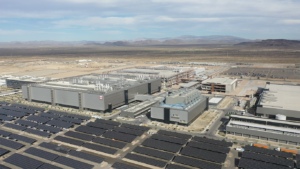Businesses need all the help they can get at the moment. The startup survival rate in Arizona is actually 49.8%, whereas nationally 45% fail in the first 5 years. So, businesses should look to leverage any and all opportunities that come their way. One of the better ways to improve a business is by using lease arrangements. Lease arrangements allow you to use assets that you wouldn’t usually be able to afford outright. Utilizing debt is clever, but it’s important to use the right kind of debt for the right kind of assets. Here we look at the capital lease and how your business can truly benefit from it.
What Is A Capital Lease?
First, let’s look at what a capital lease actually is. A capital lease is an agreement that a business would enter into that behaves like a financed purchase. It’s essentially so that the company can spread the cost of the purchase out over a period of time. It’s similar to you buying a car through finance, making the payments more manageable. It’s quite clear then what a capital lease is. However, there are things to bear in mind like the accounting treatment of a capital lease (that can become tricky depending what you buy), as well as finding the best possible agreement that can put your business first.
How Can A Capital Lease Benefit Your Business
A capital lease, also known as a finance lease, can benefit a business by allowing the company to acquire necessary equipment or property without using a large amount of cash or credit. The leasing company purchases the asset and leases it to the business, with the business making payments over a set period of time. At the end of the lease term, the business may have the option to purchase the asset for a predetermined price, or to return it to the leasing company. This can help a business to conserve cash, maintain a lower debt-to-equity ratio, and acquire necessary assets without disrupting its day-to-day operations.
A Good Lease Contract: Where To Start
You need to get to the bottom of the offered contract as fast as you can. It might be that the contract is great, but it might also be that you can find a better contract elsewhere. If the sum is large, and the lease is for a building or something of that magnitude consider speaking to a lawyer or business advisor, the last thing you want to do is commit your business to a long term lease that’s too expensive and not beneficial. Software is a good example, businesses often overpay for software because they buy too much that they don’t actually need.
How To Properly Account For A Capital Lease
Lease accounting has recently seen a shake up with the new lease accounting standard ASC 842 coming into force. Essentially, if you’re thinking about undertaking a capital lease it has to be accounted for on the balance sheet, the old lease accounting standard would allow a lot of off balance sheet activities. It basically means the lease is more transparent. The FASB created this standard to ensure transparency across different businesses so although you might find it annoying, every business has to deal with it. To properly account for a capital lease the right of use (ROU) asset must be and lease liability have to be established at the commencement of the lease and then reduced over the term.
It’s important to get the accounting treatment right because some leases are worth a lot of money. If you get them wrong and the right down is miscalculated you could be losing out by quite a lot.
So, in conclusion, you shouldn’t be afraid of a capital lease. They can help your business get to the next level without having to actually purchase larger items outright, but you have to make sure the contract is beneficial and that you properly account for the lease.




